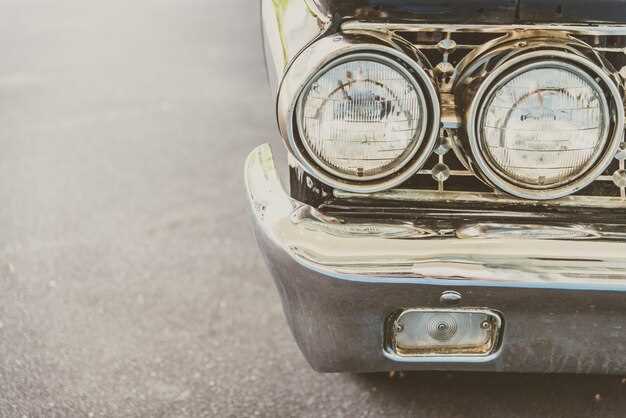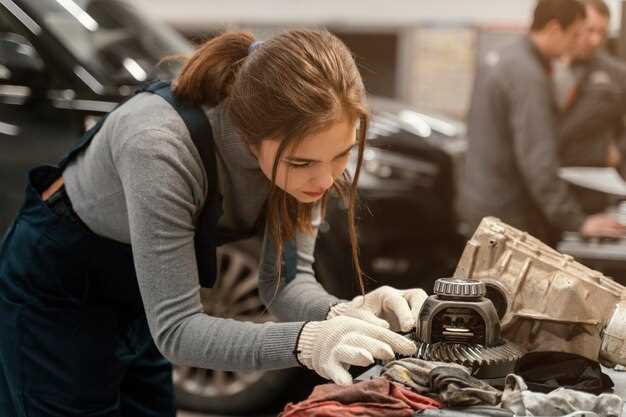
For classic car enthusiasts, nothing is more rewarding than restoring a vintage vehicle to its former glory. However, one of the greatest challenges faced during this process is sourcing genuine classic car parts. The market is flooded with imitations and replicas, which can compromise the integrity and value of a restoration project. Understanding how to find authentic parts is crucial for any serious collector or restorer.
In this article, we will explore the most effective strategies for locating genuine classic car parts. From leveraging online resources to engaging with local communities, there are numerous avenues to discover high-quality components that align with original specifications. Additionally, we will discuss the importance of verifying authenticity and the resources available to assist in this process.
With the right approach, sourcing genuine parts for classic cars does not have to be an overwhelming task. By following a systematic method and utilizing reliable resources, you can enhance your restoration journey and ensure that your vintage automobile remains a true representation of its era. Let’s dive into the essential tips and tricks to streamline your search for authentic classic car parts.
Identifying Authentic Parts for Your Vintage Vehicle
When restoring or maintaining a vintage vehicle, identifying authentic parts is crucial for both performance and value preservation. Begin by researching the specific make and model of your vehicle to understand the original specifications and component features. Utilize trusted resources, such as original manufacturer catalogs and restoration guides, to familiarize yourself with the details that distinguish genuine parts from reproductions.
Examine the part’s material and finish. Authentic parts are often made from metal or rubber compounds that differ from modern materials in texture and durability. Look for signs of age on authentic parts, including patina or slight wear, which can indicate their history and usage. Compare the weight and density of a suspect part to original specifications, as reproductions may differ in these aspects.
Check for identifying marks like part numbers, logos, or stamps that manufacturers imprint on their components. These markings can verify authenticity, but be aware that counterfeits may also have similar markings. Cross-reference these numbers with reliable databases or parts books specific to your vehicle’s make.
Another method is to seek out reputable vendors and marketplaces specializing in classic cars. These suppliers often provide documentation about the authenticity of their parts. Joining vintage car clubs or online forums can also be beneficial; experienced collectors and restorers share insights and may guide you to trustworthy sources.
Last but not least, consider consulting a professional restorer or mechanic who specializes in vintage vehicles. Their expertise can be invaluable in identifying genuine parts, as they have hands-on experience with rarity and authenticity throughout various makes and models.
Navigating Classic Car Auctions and Online Marketplaces

When it comes to sourcing genuine classic car parts, understanding how to navigate classic car auctions and online marketplaces can significantly enhance your chances of finding the right components. These platforms offer a diverse range of parts, from OEM replacements to rare collectibles.
First, it’s essential to familiarize yourself with the major auction houses and their specific events dedicated to classic vehicles. Establishments like RM Sotheby’s and Barrett-Jackson frequently host auctions that feature a plethora of classic car parts. Attending these events, whether in person or virtually, can expose you to unique items that are not readily available elsewhere. Be prepared to conduct thorough research on the auction catalogs and understand the estimated values of the parts you are interested in.
Online marketplaces have also become increasingly useful for enthusiasts looking to buy or sell parts. Websites such as eBay, Classic Car Restoration Club, and various dedicated forums provide platforms where you can browse listings from around the globe. Utilize search filters effectively to find specific parts. Always read the descriptions carefully and look for seller ratings to ensure credibility.
When engaging in these transactions, don’t hesitate to ask sellers questions about the history and condition of the parts. Photos should be scrutinized closely to verify authenticity and condition. Additionally, pay attention to return policies and shipping options to avoid complications post-purchase.
Networking within online communities and forums can also yield valuable insights. Engaging with fellow classic car aficionados can lead to tips on where to find rare components and introduce you to reputable sellers. Regular interactions might also expose you to upcoming auctions or private sales that aren’t widely advertised.
Lastly, always remain vigilant about the potential for counterfeit parts. Research is key; knowing how to identify genuine components can save you from costly mistakes. Utilize resources such as specialized manuals or connections with car clubs to accurately identify parts and their origins.
By effectively navigating classic car auctions and online marketplaces, you can streamline your search for genuine parts, ensuring your vehicle remains authentic and true to its heritage.
Building Relationships with Classic Car Part Suppliers

Establishing strong relationships with classic car part suppliers is essential for anyone passionate about restoring or maintaining vintage vehicles. These connections can significantly enhance your access to quality parts, expert advice, and often lead to better prices. Here are several key strategies for building and nurturing these vital relationships.
1. Research and Identify Reliable Suppliers
Start by researching suppliers who specialize in classic car parts. Look for companies with a strong reputation in the classic car community. Online reviews, forums, and recommendations from fellow enthusiasts can provide insights into which suppliers are trustworthy and knowledgeable.
2. Communicate Clearly and Professionally
When reaching out to suppliers, it is vital to communicate your needs clearly. Describe the specific parts you are looking for, your vehicle’s make and model, and any particular requirements you may have. A professional and courteous tone fosters respect and sets a positive tone for future interactions.
3. Attend Trade Shows and Events
Participating in classic car shows, swap meets, and industry events can provide opportunities to meet suppliers face-to-face. These interactions help establish personal connections, allowing you to discuss your needs directly and build rapport with representatives from various parts companies.
4. Build Trust Through Consistent Orders
Regular purchasing from the same suppliers can establish a sense of trust and reliability. By demonstrating that you appreciate their products and services, suppliers may prioritize your needs and offer special deals or insider information on upcoming parts.
5. Seek Expert Advice and Share Your Knowledge
Don’t hesitate to ask suppliers for advice on parts or restoration techniques. Most suppliers are passionate about classic cars and enjoy sharing their expertise. Additionally, if you have knowledge or experience to share, doing so can strengthen your relationship and encourage a collaborative atmosphere.
6. Provide Feedback
Sharing your experience with a supplier’s products can be invaluable. Providing constructive feedback–whether positive or negative–shows that you are invested in their success, which can lead to improved services and products in the long run.
7. Maintain Open Lines of Communication
Consistent communication is essential for fostering any relationship. Regularly check in with your suppliers, even when you’re not actively making purchases. By doing so, you will remain top-of-mind when they receive new inventory or have special offers.
Building relationships with classic car parts suppliers takes time and effort, but the benefits are significant. A strong network can lead to easier access to genuine parts, valuable insights, and an overall enhanced classic car restoration experience.
